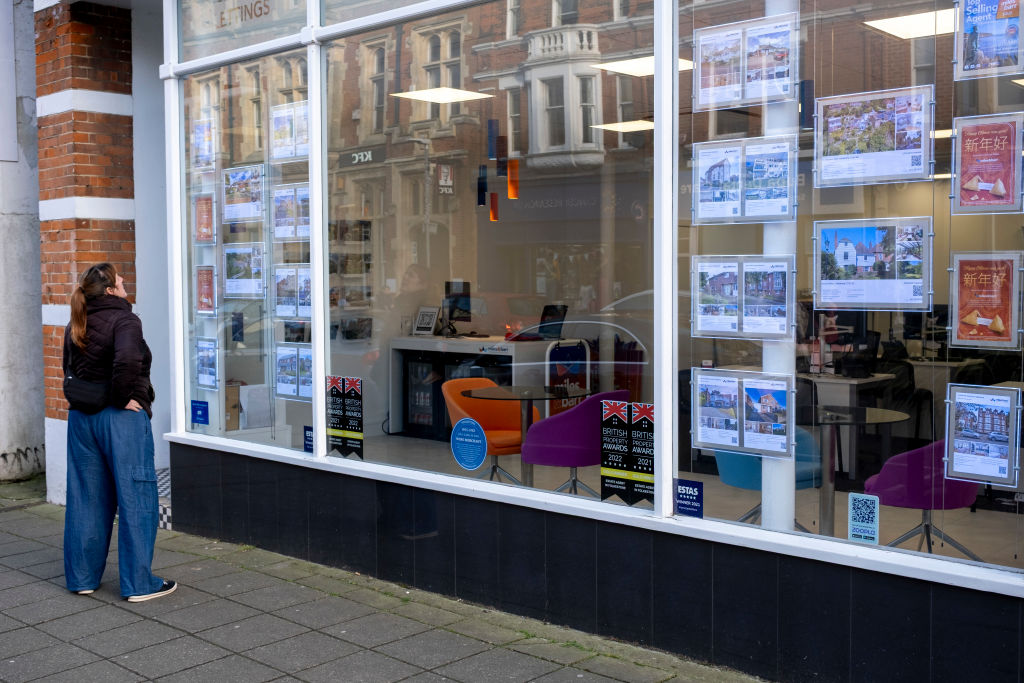Average homes in every English region are now liable for stamp duty – how much will you pay?
As average house prices in every English region are now above the stamp duty threshold, we look at how much tax you will pay.


No home movers buying the average home in England are safe from paying stamp duty as average house prices in every region now lie above the tax threshold.
Furthermore, average homebuyers in England now pay £2,500 more in stamp duty as average tax bills soared from £2,047 to £4,547 after April’s threshold changes were implemented.
Since the start of the 2025/26 tax year, homebuyers have to pay stamp duty on property purchases as low as £125,000, down from the temporarily higher threshold of £250,000.
MoneyWeek
Subscribe to MoneyWeek today and get your first six magazine issues absolutely FREE

Sign up to Money Morning
Don't miss the latest investment and personal finances news, market analysis, plus money-saving tips with our free twice-daily newsletter
Don't miss the latest investment and personal finances news, market analysis, plus money-saving tips with our free twice-daily newsletter
This has been a boon for the Treasury, which has raked in £8 billion in stamp duty revenue from January to July this year.
Brits who want to buy an average-priced home of £298,237 now face increased costs, with more of their cash being taken by the taxman.
Though the average UK property will have been liable to pay, albeit less, stamp duty before the changes, the lowered thresholds now mean that home movers in even the cheapest regions of the country have to pay the tax for the first time.
We look at how much stamp duty you can expect to pay for an average home in each region of England.
How much stamp duty will I have to pay?
While buyers in London, where house prices are far higher than anywhere else in the country, will have expected to pay stamp duty before the April hike, the tax could come as a surprise to buyers in regions where houses are cheaper.
The English region with the lowest average house prices is the North East, where the typical home costs £163,679.
Before April’s changes, the average-priced property would have been well within the stamp duty threshold, so no tax would have been due. But today, buyers in the North East will have to fork out £773 in stamp duty as the minimum threshold is now £125,000.
Similarly, buyers in Yorkshire and the Humber, where the average house costs £204,410, now incur a stamp duty bill of £1,588. They could have avoided the tax altogether before the start of the current tax year.
Threshold changes have forced home movers in every region of the North and Midlands into paying stamp duty on an average-priced home.
Jonathan Stinton, head of mortgage relations at Coventry Building Society, said: “The fact that there’s now nowhere to hide from stamp duty shows just how out of step this tax has become.
“From London to the North East, those buying a typical home in any region are now being hit with a tax that can add thousands to the cost of moving.”
A table showing how much stamp duty has to be paid for the average home in each English region can be found below.
Region | Average House | Stamp Duty |
|---|---|---|
North East | £163,679 | £773 |
Yorkshire & The Humber | £204,410 | £1,588 |
North West | £212,057 | £1,741 |
East Midlands | £238,635 | £2,272 |
West Midlands | £246,910 | £2,438 |
South West | £301,660 | £5,083 |
East of England | £337,920 | £6,896 |
South East | £383,486 | £9,174 |
London | £561,309 | £18,065 |
England | £290,956 | £4,547 |
Source: HMRC, Coventry Building Society (21 August). Calculations assume buyers are not first-time-buyers.
How does stamp duty work?
Stamp duty is a tax paid by property buyers if the house they purchase is over £125,000.
As the price of the property increases, the percentage of it that you have to pay in stamp duty also increases. The rates of stamp duty for the 2025/26 tax year are as follows.
House price | Stamp duty rate |
|---|---|
£125,000 and below | 0% |
£125,001 to £250,000 | 2% |
£250,001 to £925,000 | 5% |
£925,001 to £1,500,000 | 10% |
£1,500,001 and above | 12% |
If you are a first-time-buyer then the amount of stamp duty you pay is slightly different.
In the current tax year, first-time buyers are exempt from paying stamp duty on the first £300,000 of a property purchase up to a maximum price of £500,000.
No stamp duty is paid up to £300,000, then a rate of 5% applies on any portion between £300,001 and £500,000. If your property costs more than £500,000, stamp duty is applied as normal.
It is worth noting that stamp duty works differently in Scotland, Wales, and Northern Ireland.
Get the latest financial news, insights and expert analysis from our award-winning MoneyWeek team, to help you understand what really matters when it comes to your finances.
Daniel is a financial journalist at MoneyWeek, writing about personal finance, economics, property, politics, and investing.
He is passionate about translating political news and economic data into simple English, and explaining what it means for your wallet.
Daniel joined MoneyWeek in January 2025. He previously worked at The Economist in their Audience team and read history at Emmanuel College, Cambridge, specialising in the history of political thought.
In his free time, he likes reading, walking around Hampstead Heath, and cooking overambitious meals.
-
 Boost for over 100,000 families on Child Benefit as new HMRC payment system rolled out
Boost for over 100,000 families on Child Benefit as new HMRC payment system rolled outThousands of households will no longer have to pay the dreaded High Income Child Benefit Charge through self-assessment
-
 Are you being haunted by the ghost of Christmas past? How festive cutbacks could boost your long-term wealth
Are you being haunted by the ghost of Christmas past? How festive cutbacks could boost your long-term wealthThe average family spends around £1,000 over the Christmas season. Here’s how much you could have gained if you had invested some of the money instead.
